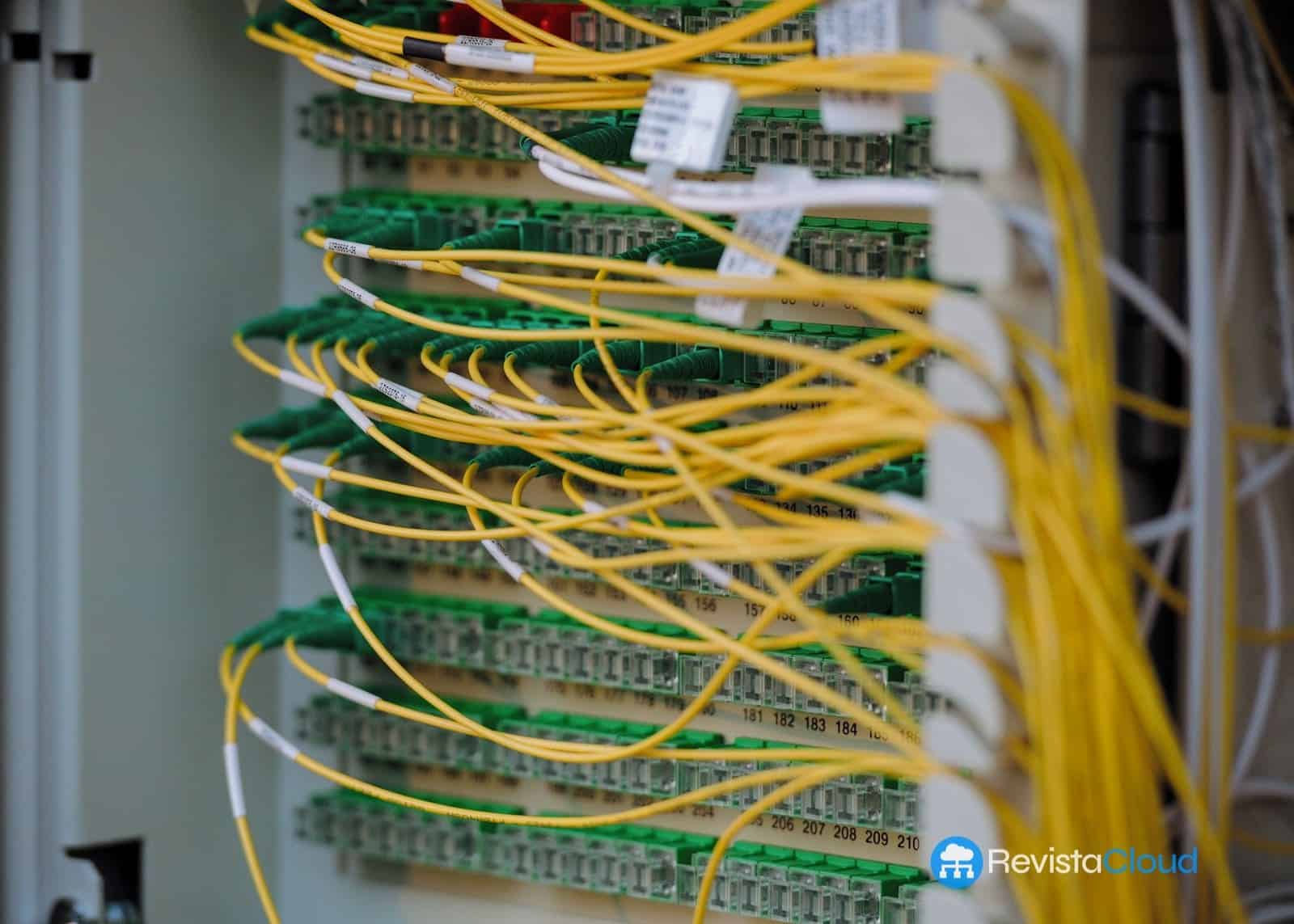Here’s the translation:
In the heart of the world’s most strategic data centers lies a room that, despite its relatively small physical size, exerts a disproportionate influence on the global flow of information: the Meet-Me Room (MMR). This technical room, where multiple network operators, service providers, and business clients converge, represents one of the pillars of modern interconnection. Its function appears simple, but its impact is critical: allowing parties to establish direct connections between their networks, eliminating the need for external, costly, or inefficient routes.
Today, amid the expansion of hybrid cloud, multicloud ecosystems, and the hyper-scale traffic demands of Artificial Intelligence, the concept of the MMR becomes even more relevant as a symbol of interconnection freedom. Below, we examine its role, functionality, evolution, and the current challenges faced by this essential component of digital infrastructure.
What is a Meet-Me Room?
A Meet-Me Room is a physically secure and highly controlled room within a data center where clients can establish physical interconnections between their equipment and that of other entities without needing to leave the building or go through the public network.
These spaces enable low-latency connections, greater security, and lower costs compared to traditional IP transit services. In a multitenant environment where businesses demand high connectivity with internet providers, carriers, public clouds, CDNs, and other networks, the MMR becomes the nerve center for traffic exchange.
Why is it so Relevant?
The MMR provides businesses and providers a freedom that is strategically important in business terms:
Network Neutrality: It allows choosing whom to connect with and under what conditions, without relying on a single provider.
Cost Optimization: It avoids the use of external connections or third-party networks for traffic exchange, reducing costs per Mbps.
Low Latency: Being physically within the same building, connections are extremely fast and reliable.
Resilience and Redundancy: Multiple possible routes in case of failures or congestion in a specific network.
- Scalability: The ability to add new connections without needing complex network reconfigurations.
Interconnection Freedom: A Strategic Necessity
In a world where digital services are essential, the freedom of interconnection offered by a Meet-Me Room translates into digital sovereignty for companies, governments, and service providers. The ability to choose which networks to interconnect with—without interference, regulatory constraints, or dependence on external infrastructures—enables decisions based on performance, privacy, data sovereignty, and economic efficiency.
This is especially relevant in regions striving to be digital hubs or interconnection centers, such as Spain, Chile, Mexico, or Brazil, where data centers position themselves as regional meeting points for global networks. Having a robust and well-managed MMR makes the difference between being a local node or a true international exchange point.
Types of Interconnections in an MMR
In a Meet-Me Room, different types of physical connections can be established, depending on the use case:
Cross-connects: Direct connection via fiber optics between two clients or between a client and an operator.
Interconnection with Internet Exchanges (IXP): Allows connectivity to a neutral traffic exchange point to optimize transit.
Connections with Public Clouds: Private links (like AWS Direct Connect or Azure ExpressRoute) provide secure and low-latency access to clouds.
- Private Peering: Bilateral traffic exchange agreements between networks with customized agreements.
Technical and Operational Requirements
Operating a Meet-Me Room requires high technical standards. Key aspects include:
Strict Cable Management: To avoid interference, connection errors, and facilitate future expansions.
Physical Security: Restricted access, 24/7 monitoring, and complete traceability of operations.
Rack and Equipment Management: Sufficient separation and redundancy in the space.
Efficient Provisioning Time: A good operator should be able to deliver a cross-connect in less than 24 hours.
- Documentation and Traceability: Every change must be clearly recorded, especially in multitenant environments.
Trends and Evolution
As edge ecosystems and cloud interconnection grow, the Meet-Me Room evolves to accommodate not only point-to-point connections but also:
Software-Defined Interconnection (SD-IX): Allows virtualized connections between networks within the same data center or across different locations.
Edge Peering: Integration of telecommunications networks and content providers at the edge.
- AI and Automation: For predictive management of capacity and performance in the room.
Furthermore, some providers are developing digital platforms that allow for automated reserving and deploying of interconnections from a web panel, without manual intervention.
The Challenge of Neutrality and Transparency
One of the main current challenges is ensuring that Meet-Me Rooms remain neutral environments, where no operator or provider has undue advantages over others. This requires clear policies, price transparency, and architectural design that allows equal opportunities for all players.
Moreover, at a time of tension among global actors and efforts toward digital sovereignty, data centers with MMRs become critical infrastructures that must be protected from technological monopolies, undue state interventions, or unauthorized traffic filtering.
The Meet-Me Room is much more than a technical room within a data center: it is the physical foundation that supports the freedom of interconnection, an essential right in modern digital infrastructure. Its design and management define how data flows, how fast, how securely, and with what freedom.
In an era where connectivity defines the value of businesses, countries, and digital ecosystems, having efficient, open, and well-managed MMRs is not a luxury: it is a strategic necessity.

